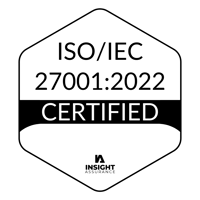 Photo: DeviantArt
Photo: DeviantArt
With the recently announced two-year delay of the Cadillac tax (from 2018 to 2020) and the pending presidential election debating the entirety of the ACA, its unclear if the 40% excise tax will ever become a reality. In theory, the tax is meant to reduce employer and employee healthcare spending and help fund the expansion of the ACA. In reality, companies of all sizes are fighting against it saying that the toll will significantly impact the affordability and accessibility of healthcare for US workers. And with healthcare costs skyrocketing, well beyond normal wage growth and inflation, the Cadillac tax seems almost unavoidable, if it comes to fruition in 2020.
There doesn’t seem to be much in the way of a solution at this point – perhaps that why the two-year delay passed in the Senate so handily. The healthcare industry needs more time to reign in the out-of-control spending and cost increases, and employers need time to figure out a plan that doesn’t involve significant cost-shifting – something that bears weight on recruitment and retention opportunities, especially for smaller organizations and nonprofits. But cost-shifting, along with decreasing benefits, tends to get the bulk of attention as a feasible solution for avoiding the Cadillac tax and keeping an eye on the bottom line.
There is another way to stem the tide of rising healthcare costs though, one that benefits employees and employers, and reduces the likelihood of paying the 40% excise tax in four years. Partially self-funded insurance is designed to lower premium and out-of-pocket expenses all around, while providing an improved, customized benefits plan. By coupling a high deductible health plan (HDHP) with reserve funds for out-of-pocket expenses (e.g. deductibles and copays) organizations can bank on most employees staying healthy and needing only minimal medical intervention. If this happens, reserve funds stay mostly in tact (and can be reinvested at the end of the year) and healthcare spending is kept below the Cadillac tax threshold. However, the challenges with partial self-insuring can include administrative burdens and a lingering financial risk. Without proper support, these may be a deterrent for organizations with tight budgets and small staff.
Partial self-funding may not be the be-all-end-all solution to the issue of rising health costs and the Cadillac tax – but it is a smart, viable option for small-to-midsize organizations that are struggling to meet employee needs without breaking the bank. For more information on how partial self-funding can save your organization money while also supporting recruitment and retention – with zero financial or administrative risk – please contact us or download
The Nonprofit Executive's Guide to Partial Self-Insurance


.png?width=1501&name=Nonstop_Logo-22-Horizontal%20(2).png)




